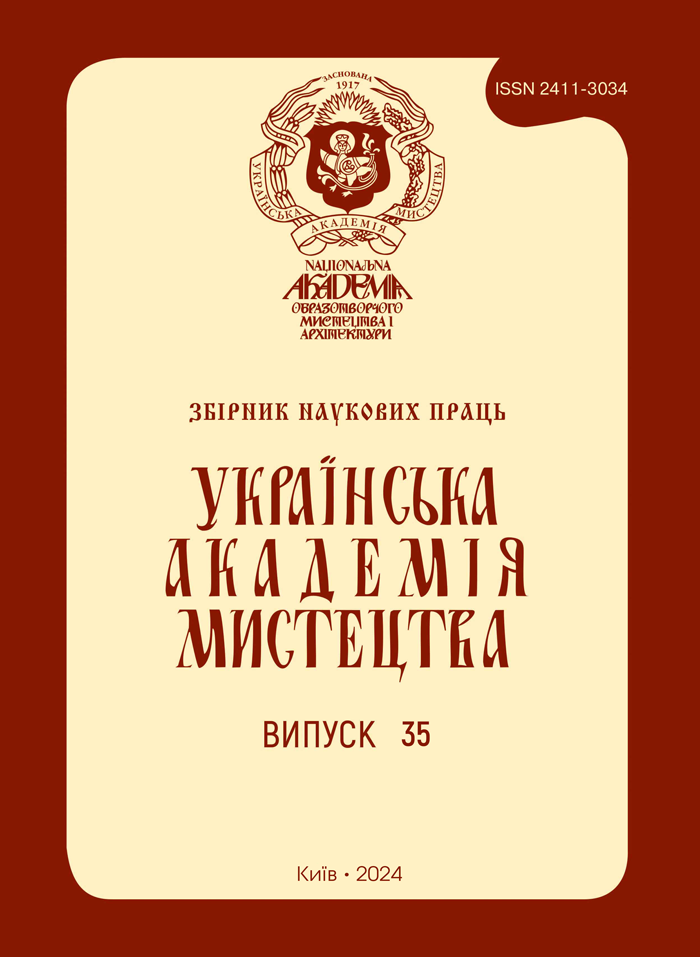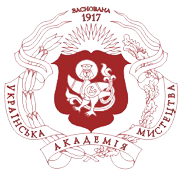SYNTHESIS OF PLEIN AIR AND DRAWING FROM PHOTOGRAPHS IN ONE'S OWN CREATIVE EXPERIENCE
DOI:
https://doi.org/10.32782/2411-3034-2024-35-16Keywords:
plein air, photo, landscape, composition, color, nature, paint ingAbstract
The purpose of the article is to study the basic principles of working in plein air and photography, determining their role and the balance between them in artistic, educational and creative activities. Research methods. The research is based on an empirical method of description, observation and a theoretical method of comparative analysis, which made it possible to highlight the main principles of working outdoors and as a photographer, to determine the balance between uncomfortable, but interesting work outdoors and comfortable, but not creatively motivating, working conditions for photography. The role of plein air for educational and creative activities in comparison with photography work is described and analyzed. The results. The conducted studies showed the expediency of using plein air both for beginning artists for the purpose of learning and gaining experience, and for experienced artists for the purpose of increasing the level of skill and creative development; highlighted the role of photography as a tool and means for the creative activity of professional artists. The results of the research determined the balance in the use of these two different and competing principles of artistic activity. Conclusions. The study raises such a problem as contrasting two methods of working on a picture, which are fundamentally different from each other. The first way considers working with photography a conjuncture and a sign of unprofessionalism. The second method involves the rejection of living nature as a relic of the past and old-fashioned, relying on modern technical capabilities. The novelty of this publication lies in finding a balance between these two methods. The main stages of the work of two types of artistic activity, which are different in principle, have been studied. It is clarified how these two methods can be used in the most balanced way to achieve creative and educational goals. The balance between plein air and photographic work gives an opportunity to define the roles of these methods in the construction of creative and educational processes in a new way. In the future, the research results can be a theoretical and practical basis for novice and professional artists.
References
Мельничук І. Методика викладання живопису на пленері. Завдання «Пейзаж» для студентів майстерні пейзажного живопису НАОМА. Українська академія мистецтва : дослідн. та наук.- метод. пр. Київ, 2018. Вип. 27. С. 145–151.
Черватюк В. О. Методичні рекомендації з пленерного живопису для молодих художників. Українська академія мистецтва : дослідн. та наук.-метод. пр. Київ, 2013. Вип. 21. С. 44–51.
Черватюк В. О. Пленерний живопис – невід’ємна складова художньої освіти. Актуальні проблеми мистецької практики і мистецтвознавчої науки. 2010. Вип. 3. С. 403–409.
Черній Л. Я. Пленер як важлива складова роботи над пейзажем з натури на заняттях із образотворчого мистецтва. Педагогічний пошук. 2018. № 2. С. 57–60.
Пунгіна О., Гусєва Л. Пленерна практика як засіб формування образотворчої компетентності майбутніх педагогів-художників. Актуальні питання гуманітарних наук. 2021. Вип. 36, Т. 3. С. 185–191.
Сова О. С. Методика виконання пейзажу на пленері. Наукові праці. Педагогіка. 2017. Вип. 291, Т. 303. С. 124–127.
Клейменова С. М., Яблокова О.І. Фотографія як об’єкт авторського права. Науковий вісник Ужгородського Національного Університету. Серія Право. 2023. Вип. 78. С. 177–180.




